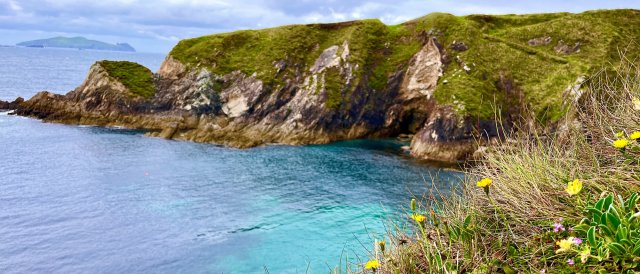When you arrive in Ireland, the countryside looks like a huge patchwork quilt of green fields, rolling hills and towering cliffs.
We are less well-known for forests and trees.
When I'm guiding people around Ireland on small-group tours, I always point out the remaining patches of ancient forest that hug the hillsides and blanket the valley floor.
Many people overlook the importance of these last bastions of native trees on the island.
In fact, today, Ireland has one of the lowest rates of forest cover in Europe.
The History of Trees In Ireland 🌳
At one point, the island of Ireland was one big forest. Trees covered the land from north to south, east to west.
It was said that a squirrel could hop from branch to branch across Ireland without ever touching the forest floor!
This ancient forest was home to now-extinct animals such as wolves, bears, wild boar and the noble great Irish elk.
Trees were the home and hunting ground of the first human inhabitants of Ireland. The forests provided the ancient Irish with food, building material and fuel.
These nomadic hunter gatherers held huge respect for nature. Their pagan beliefs held trees in the highest possible regard.
Certain types of trees were protected under Brehon law — an ancient Irish law system. Damage to or cutting down of protected trees resulted in heavy penalties, ranging from the confiscation of livestock to, believe it or not, execution.
The ancient Irish understood that each native tree species had its own spirit and influenced their lives in some way; something that people in the modern world could learn from!
Here are three of those trees to keep a look out for while touring Ireland...
Hawthorn 🧚
The hawthorn tree holds a special place in Irish culture.
A symbol of psychic protection, this native Irish tree species was traditionally planted near churches, sacred monuments and special dwellings.
Hawthorns blossom in May and June with clusters of tiny, white flowers. The tree is sometimes known as 'whitethorn' as a result.
Hawthorns do not reach extremely tall heights. However, as a results of their spikes, they can form thick and impenetrable hedgerows when growing together.
The magical power of hawthorns cannot be underestimated, even in the modern era.
It is still believed by many in Ireland that fairy spirits live among hawthorns. Hence the species' alternative name, 'fairy tree'.
If you encounter one of these trees, whatever you do, do not damage it or break a branch!
In Clare, the completion of a motorway was delayed by years as the original plan had the road running right through a hawthorn. This 'fairy tree' had to be carefully moved so as not to disturb the fairies and curse the new road.
Latin Name: Crataegus monogyna
Irish (Gaelic) Name: Sceach gheal
Holly 🍃
The native Irish holly is an evergreen.
It fruits in late autumn, a time of darkness in Ireland when almost all other flora in Ireland have gone dormant.
Holly was often planted around homes for protection against lightening. For this reason, it is viewed as a symbol for protection.
Ancient Irish warriors carried clubs made of holly as the wood was thought to repel evil.
Holly carried regal significance in ancient Ireland. Celtic chieftains were crowned with a holly wreath.
Of course, in modern Ireland, holly is associated with the celebration of Christmas, when holly wreaths are a common sight.
Both the English and the Irish name for Holly — cuileann — occur frequently in placenames around Ireland. Hollywood and Ballycullen are both to be found in Wicklow, for example.
Latin Name: Ilex aquifolium
Irish (Gaelic) Name: Cuileann
Crab Apple 🍏
The native Irish crab apple tree is slight of build; smaller than a regular apple, in fact.
The crab apple tree has brilliant pink-white flowers which burst forth in the spring. Their delicate floral aroma carries on the wind in hedgerows where native crab apples still grow.
The fruit of the crab apple is much smaller and tarter than a normal 'eating' apple. Crab apples boast very high pectin content. As a result, home cooks in Ireland mix them with sugar to make a delicious natural jelly conserve.
Crab apples were traditionally associated with immortality and fertility in Ireland. The ancient Irish would decorate bed chambers with apple blossoms as a results.
The formation of the crab apple tree trunk was said to have a female form.
Apple orchards were traditionally protected as sacred ground.
Latin Name: Malus Sylvestris
Irish (Gaelic) Name: Ceirt / Crann Fia-Úll










